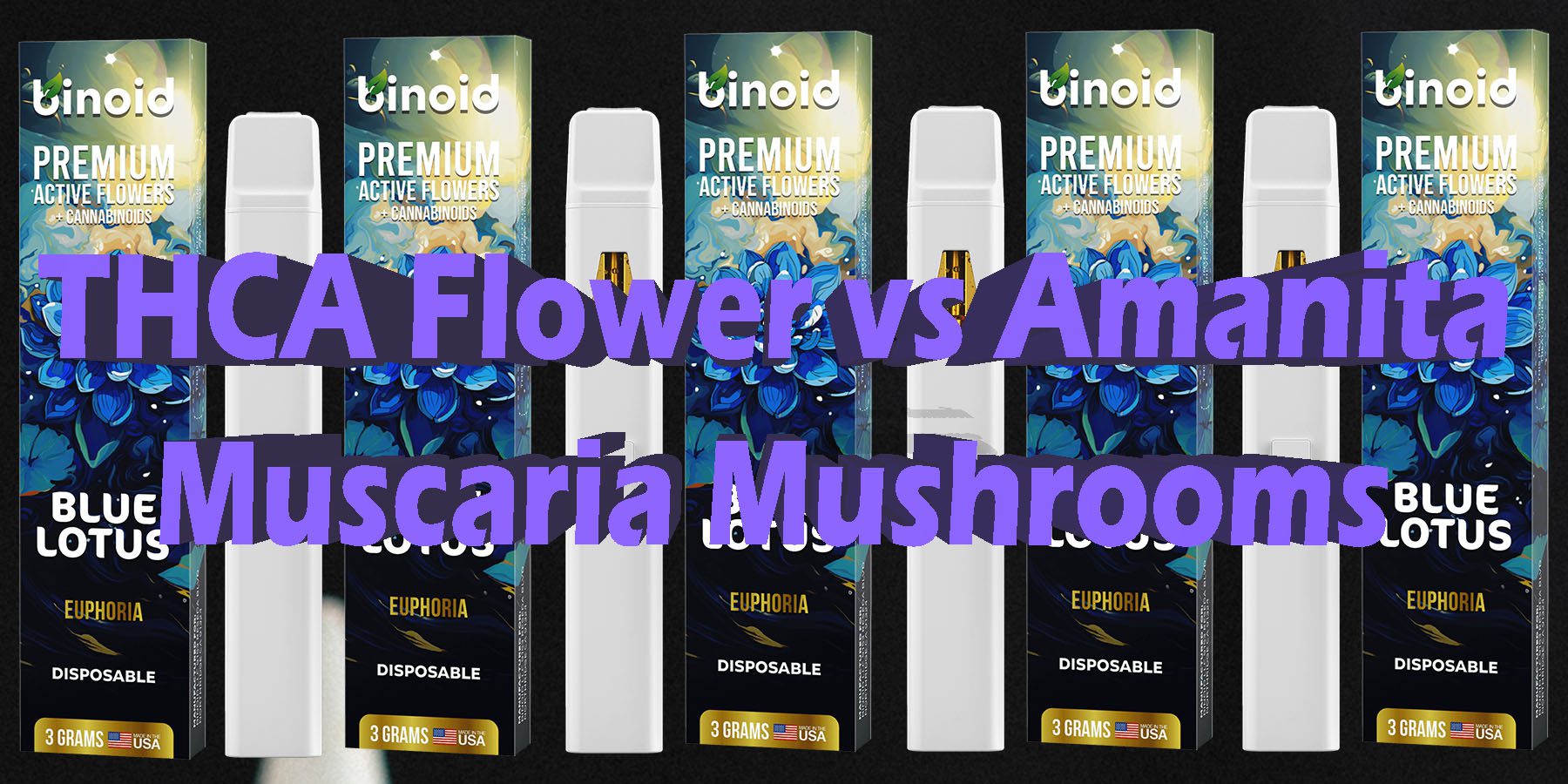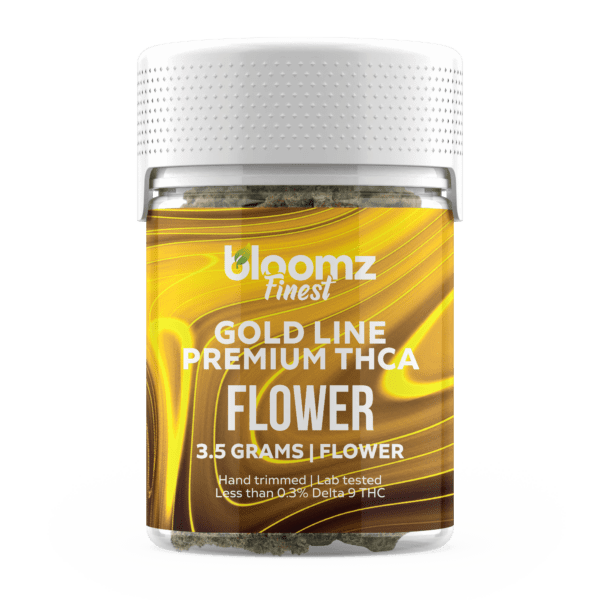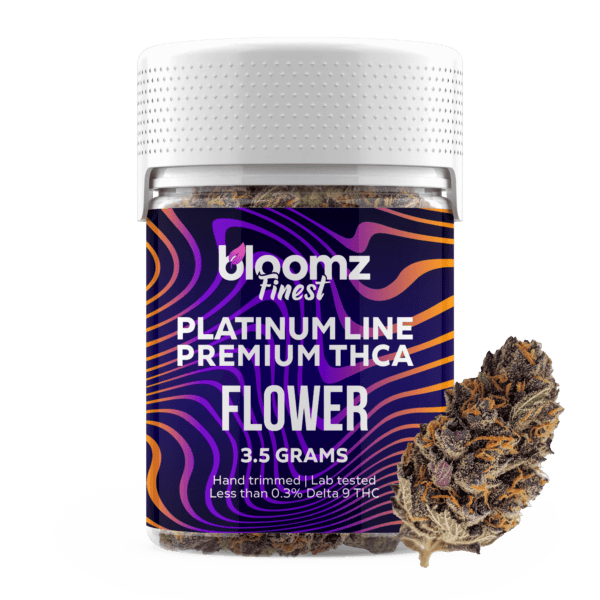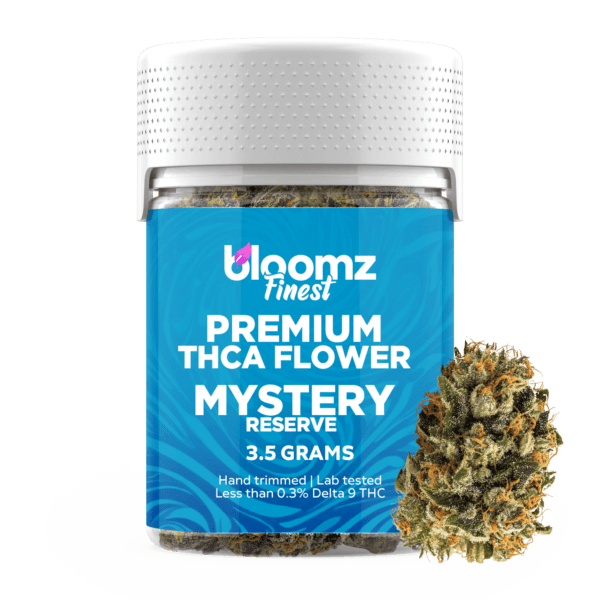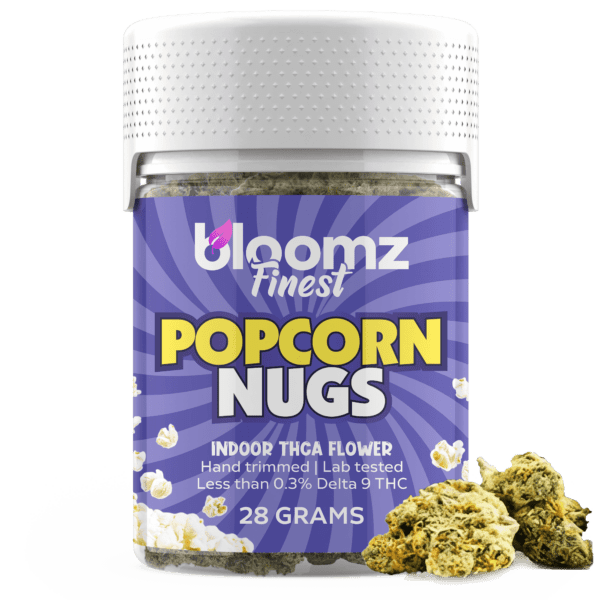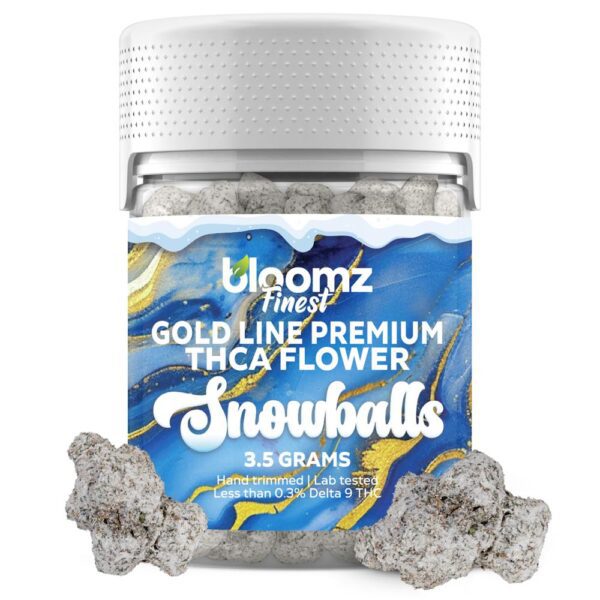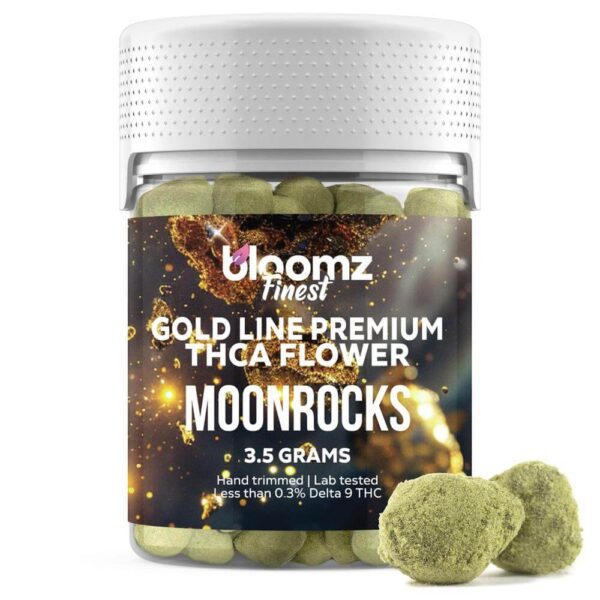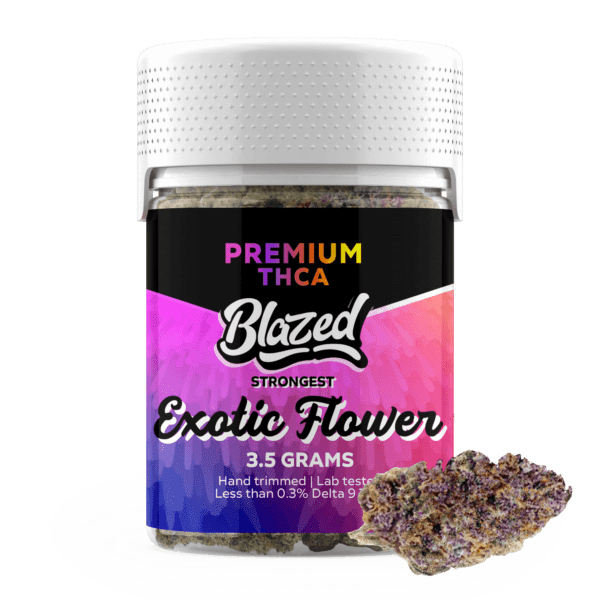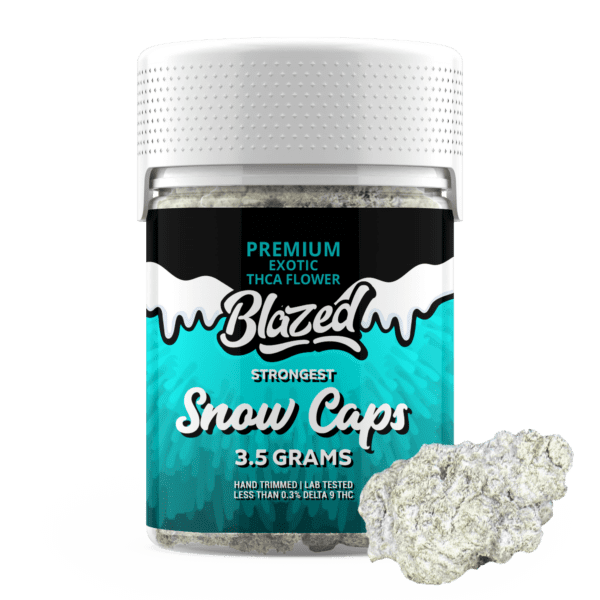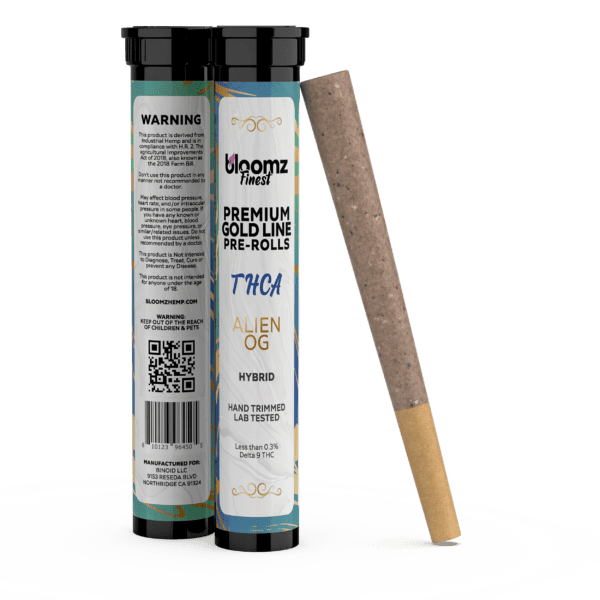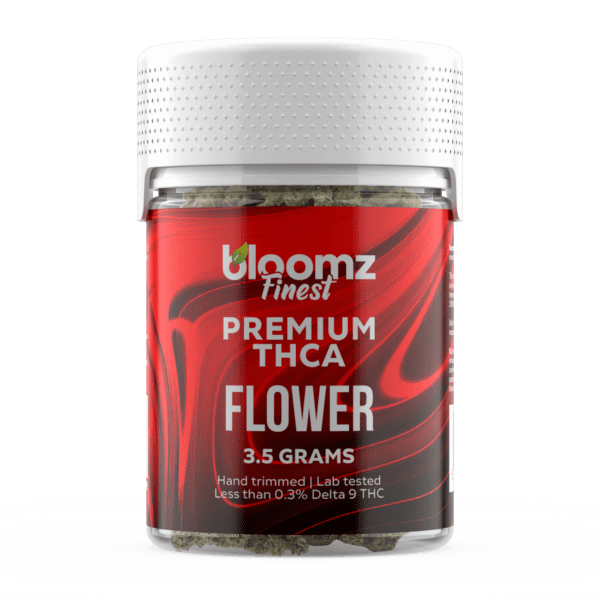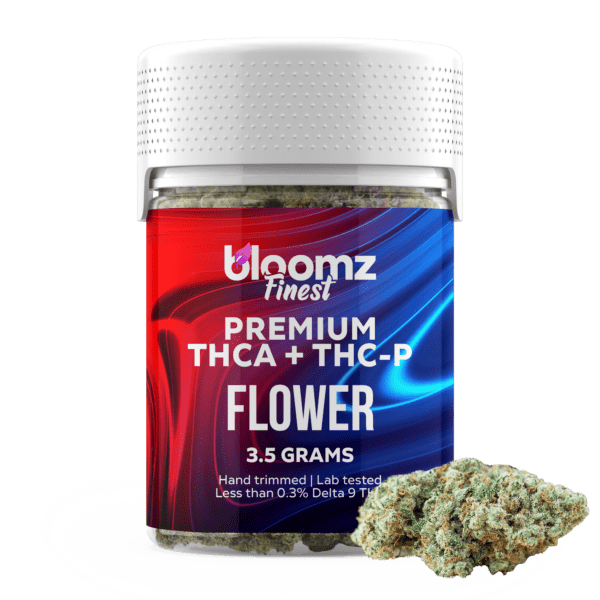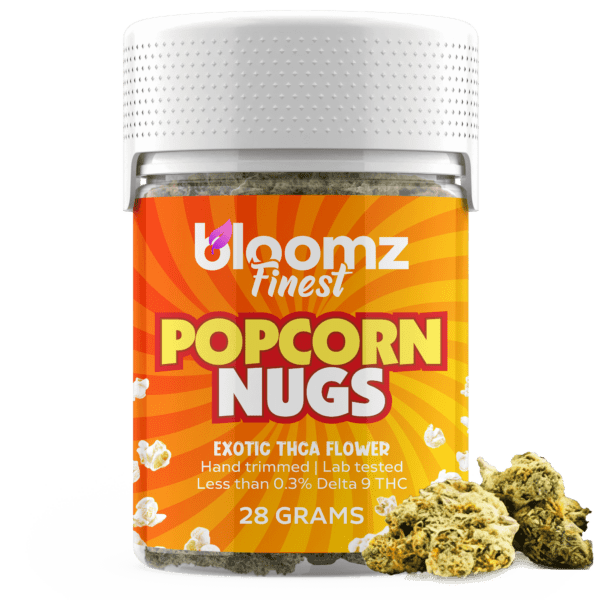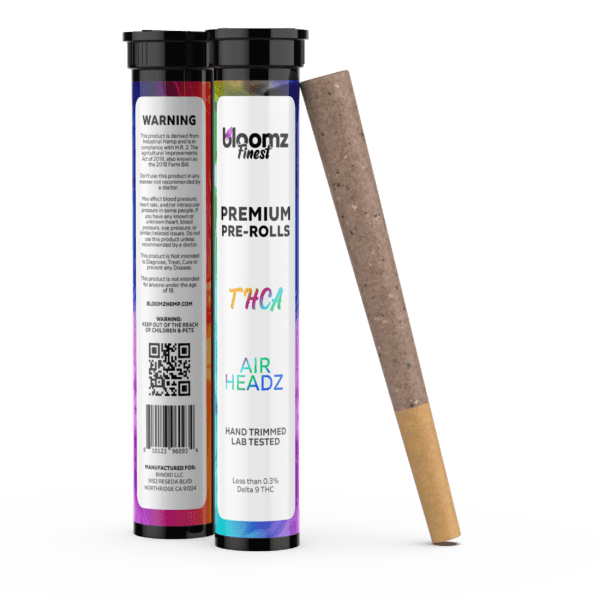The natural world is a vast and wondrous tapestry, woven with countless threads of botanical and fungal curiosities that have captivated human imagination for millennia. From the verdant fields where familiar plants reach for the sun to the shaded, mysterious forest floors where fungi emerge from the earth, there exists an incredible diversity of life, each with its own unique story and composition. In the modern marketplace of explorative experiences, two particularly compelling natural products have risen to prominence, each offering a distinct journey from a completely different kingdom of life.
On one hand, we have the crystalline-dusted buds of THCA flower, a product of botanical ingenuity rooted in the familiar cannabis plant. On the other, the iconic, fairy-tale visage of the Amanita Muscaria mushroom beckons, a fungus steeped in ancient lore and shamanic tradition. These two are not merely different products; they represent fundamentally different pathways to altered states of perception, and understanding their profound dissimilarities is the first step toward making a truly informed choice. They stand as titans from separate domains, one a carefully cultivated plant, the other a wild and enigmatic mushroom, both now packaged for a new generation of curious consumers.
To Buy THCA Flower Click Here
Recommended products
-
THCA Flower – Indoor Exotics – Gold Line
$37.99$69.99 -
THCA Flower – Platinum Line
$49.99$79.99 -
THCA Flower – Mystery Reserve
$41.99$79.99 -
THCA Smalls
$149.99$256.99
Why It’s Important to Breakdown the Matchup of THCA Flower vs. Amanita Muscaria Mushrooms
In an era defined by expanding choices and a growing curiosity for natural alternatives, the need for clear, detailed, and nuanced information has never been more critical. The digital shelves are now filled with products that were once the subject of hushed conversations or esoteric texts, and navigating this new landscape requires a discerning eye and a solid foundation of knowledge. Pitting THCA flower against Amanita Muscaria mushrooms is not an arbitrary comparison; it is a vital exercise in distinguishing between two profoundly different substances that are often grouped under a broad, and sometimes misleading, umbrella of “alternative products.”
This breakdown serves to dismantle misconceptions, clarify chemical compositions, and illuminate the vast gulf that separates their effects, legal statuses, and cultural histories. By carefully dissecting each contender, we empower individuals to move beyond marketing claims and make choices that are aligned with their personal intentions, comfort levels, and the specific type of experience they seek.
The primary importance of this comparison lies in the fundamental difference in their pharmacology and resulting effects. THCA flower is a product of the cannabis plant, and its primary allure is its conversion to Delta 9 THC, the well-known psychoactive compound responsible for the classic cannabis experience. This journey is often characterized by feelings of euphoria, deep relaxation, and a creative shift in perspective.
Conversely, Amanita Muscaria operates on a completely different neurological pathway. It contains no psilocybin, the compound found in “magic mushrooms,” but instead features muscimol and ibotenic acid, which induce a state closer to a vivid, dissociative dream than a classic psychedelic trip. Failing to understand this distinction is not just a matter of preference; it is the difference between anticipating a chilled-out evening on the couch and potentially embarking on a looping, reality-bending inner voyage.
Furthermore, their legal and safety profiles are worlds apart. THCA flower exists in a complex legal gray – hemp containing less than 0.3% Delta 9 THC by dry weight. This has led to a burgeoning, largely regulated industry with an emphasis on lab testing and product consistency. Amanita Muscaria, on the other hand, is federally legal in the United States (with a few state-level exceptions) simply because its active compounds are not listed on the Controlled Substances Act.
However, it also carries a greater inherent risk if sourced or prepared improperly, as the raw mushroom contains the neurotoxic compound ibotenic acid, which needs to be converted to the more desirable muscimol through processes like drying and heating. Understanding these legal nuances and safety considerations is paramount for responsible consumption.
Finally, this detailed matchup honors the rich and separate histories of these two natural wonders. Cannabis has a long and storied past as a textile, a source of nourishment, and a ceremonial plant used across countless cultures for social and spiritual purposes. Its modern iteration as THCA flower is the latest chapter in this ancient story. Amanita Muscaria’s history is perhaps even more mysterious and steeped in folklore, with theories linking it to Siberian shamanism, ancient Vedic rituals, and the very fabric of European fairy tales.
Appreciating these distinct cultural legacies adds a layer of depth to the consumer experience, transforming it from a simple transaction into a connection with a long lineage of human exploration. By placing them side-by-side, we can fully appreciate their individual identities, ensuring that curiosity is met with clarity and respect for the powerful natural sources from which they originate.
Contender #1: THCA Flower
Emerging from the ever-evolving world of cannabis cultivation and science, THCA flower has rapidly carved out a significant niche for itself, representing a fascinating intersection of botanical tradition and modern legal frameworks. It stands as a testament to the ingenuity of growers and the intricate chemistry of the cannabis plant, offering an experience that is both timelessly familiar and refreshingly new. To the uninitiated eye, a bud of high-quality THCA flower is indistinguishable from its more restricted marijuana counterpart, boasting the same vibrant colors, complex aromas, and sparkling coat of crystalline trichomes.
This striking similarity is no coincidence; it is the result of meticulous breeding and cultivation practices aimed at maximizing one specific compound while adhering to a strict legal standard. THCA flower is not a synthetic product or a lesser version of a classic; it is a genuine, high-potency cannabis flower that operates within a unique legal space, making it one of the most talked-about and sought-after products in the modern hemp market. Its story is one of chemistry, legal interpretation, and the relentless pursuit of quality by a dedicated community of cultivators.
At its core, the phenomenon of THCA flower revolves around a single molecule: Tetrahydrocannabinolic acid (THCA) – a non-psychoactive acidic precursor to the famous Delta 9 THC. In the living cannabis plant, this is the primary form in which the cannabinoid exists. Think of THCA as Delta 9 THC in a dormant state, possessing a different molecular structure that includes an extra carboxyl ring. This additional ring prevents the molecule from binding effectively with the CB1 receptors in the brain, the interaction responsible for the intoxicating effects associated with cannabis. It is for this reason that consuming raw, unheated cannabis does not produce a significant psychoactive experience. The magic, as it were, lies in a process called “decarboxylation”.
When THCA is exposed to heat—through smoking, vaping, or cooking—it loses that extra carboxyl ring and is converted into the psychoactive Delta 9 THC. This transformation is the entire basis upon which THCA flower’s effects are built, a simple chemical reaction that unlocks the plant’s full potential.
Recommended products
So, what exactly is THCA flower, and how is it produced to walk this fine legal line? THCA flower is cannabis flower, specifically cultivated from strains that are naturally high in THCA but extremely low in Delta 9 THC at the time of harvest. According to the 2018 Farm Bill, hemp is legally defined as a cannabis plant containing no more than 0.3% Delta 9 THC by dry weight. Savvy cultivators have leveraged this definition by breeding strains that produce vast quantities of THCA while keeping the Delta 9 THC levels below the legal threshold. The production process is a delicate art and science, requiring precision at every stage to ensure a high-quality, compliant final product:
Genetic Selection: The process begins with choosing the right genetics. Cultivators select cannabis strains known for their robust trichome production and high THCA potential. These are often iconic, high-potency strains that are carefully bred over generations to express the desired cannabinoid profile, specifically minimizing the natural degradation of THCA into Delta 9 THC while the plant is growing.
Controlled Cultivation: The plants are typically grown in highly controlled indoor or greenhouse environments. This allows growers to manage every variable—light cycles, temperature, humidity, and nutrients—to optimize the plant’s health and maximize trichome development. Stressing the plant in specific ways can encourage resin production, leading to higher concentrations of cannabinoids like THCA.
Precision Harvesting: The timing of the harvest is absolutely critical. Growers must harvest the plants at their peak maturity, just before the natural degradation process or exposure to environmental heat and light could convert a significant amount of THCA into Delta 9 THC, potentially pushing the flower over the legal 0.3% limit.
Careful Curing: After harvesting, the flower is carefully dried and cured. This is a slow process designed to remove moisture while preserving the delicate cannabinoids and terpenes. The curing environment is kept cool and dark to prevent premature decarboxylation and maintain the flower’s legal status, all while enhancing its aroma and flavor.
Compliance Testing: Before hitting the market, reputable brands send samples of their flower to third-party laboratories for comprehensive testing. This analysis confirms the flower’s cannabinoid profile, ensuring it is below the 0.3% Delta 9 THC threshold, and also screens for pesticides, heavy metals, and other contaminants, guaranteeing a safe and compliant product for the consumer.
The market for THCA flower is incredibly diverse, offering a wide spectrum of types and categories to suit every preference and budget. This variety reflects the maturity of the cannabis cultivation industry and the discerning tastes of consumers who look for specific qualities in their flower. From the environment it was grown in to the way it is processed and presented, each category offers a unique set of characteristics. Understanding these distinctions is key to navigating the options and finding the perfect product to match one’s desired experience, whether that’s the pinnacle of aromatic intensity or the simple convenience of a ready-to-use format.
This granular level of choice allows users to tailor their experience with a precision that was once unimaginable in the broader market:
Indoor THCA Flower: Considered the gold standard by many connoisseurs, indoor-grown THCA flower is cultivated in completely controlled environments. This method gives growers god-like control over every aspect of the plant’s life, from the exact spectrum of light it receives to the precise humidity and CO2 levels in the air. The result is typically a visually stunning product with dense, perfectly formed buds, a thick coating of crystalline trichomes, and an intensely pungent aroma. Indoor flower often commands a higher price due to the significant energy and infrastructure costs involved, but for those seeking maximum potency and the most vibrant terpene profiles, it is often considered the pinnacle of quality.
Outdoor THCA Flower: Grown under the natural sun, outdoor THCA flower embodies a more traditional and sustainable approach to cultivation. These plants grow larger and produce buds that can be less dense than their indoor counterparts, but they often possess a unique and complex character influenced by the natural terroir—the soil, climate, and environment in which they were grown. While sometimes less visually perfect, high-quality outdoor flower can offer a rich, full-bodied flavor profile and robust effects. It is also generally more affordable, making it an excellent choice for budget-conscious consumers who appreciate a more rustic, sun-grown product.
THCA Smalls: This category refers not to a specific growing method but to the size of the buds. “Smalls” are smaller, pea-sized or popcorn-sized nuggets of flower that are often separated from the larger, premium colas during the trimming and sorting process. They come from the same high-quality plants as the larger buds and possess the same potency and terpene profile, but are offered at a lower price point due to their less commanding visual appeal. THCA smalls are a fantastic value proposition, providing access to top-shelf genetics without the premium price tag of the top colas.
THCA Nugs: “Nugs” is a colloquial term for the standard, trimmed buds of the cannabis plant. This is the most common form in which THCA flower is sold. These are the well-formed, manicured pieces of flower that represent the main harvest of the plant’s colas (the large clusters of buds at the top of the plant). The quality can range from outdoor to top-shelf indoor, but the term itself simply refers to the classic, ready-to-use form of the flower that most people picture when they think of cannabis.
THCA Snowballs/Snow Caps: This is a more specialized and potent category of THCA flower. A THCA Snowball starts as a premium bud of THCA flower that is then coated in or rolled in pure THCA isolate, a crystalline powder that is nearly 100% pure THCA. This process dramatically increases the overall THCA content of the flower, giving it a unique, frosted or “snow-dusted” appearance. The resulting product is incredibly potent and is intended for experienced users seeking a particularly powerful effect upon decarboxylation.
THCA Moonrocks: Taking the concept of infused flower a step further, THCA Moonrocks are a trifecta of potency. They are created by taking a high-quality nug of THCA flower, coating it in a sticky cannabis concentrate or oil (often one that is also high in THCA), and then rolling the entire sticky concoction in a generous layer of kief (the collected trichomes from cannabis flower). The result is a dense, heavy, and extraordinarily potent product that is best consumed by breaking it apart and smoking it in a bowl or pipe, as it can be too sticky for grinders.
THCA Pre-Rolls, Blunts & Joints: For consumers seeking ultimate convenience, the market offers a wide array of pre-prepared smokable options. THCA Pre-Rolls or Joints consist of ground THCA flower rolled in a thin paper, often with a filter tip. THCA Blunts are similar but use a larger wrap made from tobacco leaves or hemp, which can impart its own unique flavor and a slower burn. These products eliminate the need for grinding, rolling, or packing, offering a grab-and-go solution that is perfect for social settings or for those who prefer not to handle the flower directly.
Exotic THCA Flower: The term “Exotic” typically refers to rare, highly sought-after, and genetically unique strains. These are often the result of extensive breeding projects by master cultivators, resulting in novel combinations of color, aroma, flavor, and bud structure. An exotic strain might feature deep purple or bright orange hues, smell of tropical fruits or sweet desserts, and have a density and trichome coverage that sets it apart from more common varieties. They are prized for their uniqueness and complex terpene profiles.
AA Exotic THCA Flower: In the informal grading system used by many enthusiasts and dispensaries, “AA” represents a mid-grade flower. It’s a solid, enjoyable product, but it may lack the visual “bag appeal” of higher grades. The buds might be slightly less dense, the trim a little less perfect, or the aroma not quite as pungent. It’s often a reliable and affordable option that gets the job done without the bells and whistles of the top-shelf tiers.
AAA Exotic THCA Flower: “AAA,” or “trips,” is considered the standard for high-quality cannabis. This flower exhibits all the desirable characteristics: good bud density, a visible and generous coating of trichomes, a strong and pleasant aroma, and a clean trim. It represents a well-grown, potent product that will satisfy the vast majority of consumers. Most of the reputable flower on the market falls into this or the subsequent category.
AAAA Exotic THCA Flower: “AAAA,” also known as “quads,” represents the pinnacle of cannabis cultivation—the true top-shelf. This flower is virtually flawless. It features rock-hard, dense buds that are meticulously trimmed, an overwhelming and complex terpene profile that fills the room, and a layer of trichomes so thick that the flower sparkles under the light. The colors are vibrant, the structure is perfect, and the overall experience is considered the best of the best, commanding the highest price and offering the most premium experience.
Just as important as the type of THCA flower is the specific strain, which is broadly categorized into Indica, Sativa, and Hybrid. These classifications are a traditional way of predicting the potential effects of a particular variety, based on its genetic lineage and, more scientifically, its typical cannabinoid and terpene profile. While every individual’s experience can vary, these categories serve as a useful starting point for consumers looking to tailor their experience toward a specific mood or activity.
The nuanced differences between them are what give the world of cannabis its incredible depth and variety, allowing users to find a strain that resonates perfectly with their personal chemistry and desired outcome:
Indica: Traditionally associated with plants originating from the Hindu Kush mountain region, Indica strains are known for their short, bushy stature and broad leaves. In terms of effects, they are renowned for producing a deeply relaxing and sedative experience, often referred to as a “body high.” The feelings are typically centered on physical sensations, promoting a sense of calm, comfort, and tranquility that can lead to a state of blissful repose. Terpenes commonly found in Indica strains, such as myrcene, are often associated with these calming and soothing effects. Users often choose Indica strains for evening use, to unwind after a long day, or to settle into a chilled-out, meditative state.
Sativa: Sativa strains typically originate in equatorial regions and are characterized by their tall, lanky plant structure and thin leaves. The experience associated with Sativas is often the polar opposite of Indicas. They are known for producing an energizing, uplifting, and cerebral effect, often described as a “head high.” This can manifest as a surge in creativity, focus, and sociability, making them a popular choice for daytime activities, creative projects, or social gatherings. Common terpenes in Sativas like limonene and pinene are often linked to these invigorating and mood-lifting qualities. The experience is typically more about mental stimulation than physical relaxation.
Hybrid: As the name suggests, Hybrid strains are the result of crossbreeding Indica and Sativa plants. They represent the vast majority of strains available on the market today and offer a balanced spectrum of effects that can be tailored to specific desires. Hybrids can be Indica-dominant, Sativa-dominant, or a true 50/50 mix. This allows cultivators to create strains that provide the best of both worlds—for example, a strain that offers a feeling of euphoria and mental clarity alongside a comfortable sense of body relaxation without being overly sedative. The specific effects of a hybrid depend entirely on its unique genetic parentage and resulting terpene profile, offering an almost endless variety of nuanced experiences.
THCA flower’s legality here in the U.S. is one of the most discussed and debated topics in the cannabinoid industry. Its existence is a direct result of the language used in the 2018 Agriculture Improvement Act, more commonly known as the 2018 Farm Bill. This landmark piece of legislation federally legalized the cultivation and sale of hemp, which it defined as the cannabis sativa L. plant with a Delta 9 THC concentration of not more than 0.3 percent on a dry weight basis. Critically, the law did not place a limit on the concentration of THCA. This omission created a legal loophole: as long as a cannabis flower contains less than 0.3% Delta 9 THC at the time of testing, it is legally considered hemp and can be sold in many states, regardless of its THCA content.
This allows consumers to purchase a product that is, for all intents and purposes, high-potency cannabis, as the THCA will readily convert to Delta 9 THC when heated. However, it is a legal gray area, and some states have enacted their own laws that use a “total THC” standard (calculating the potential Delta 9 THC from the THCA content), making THCA flower illegal in those jurisdictions. Therefore, while federally permissible under the current interpretation, its legality can vary significantly from state to state, and consumers must remain aware of their local regulations.
The purposes for using THCA flower are as diverse as its strains, with consumption methods that allow for a range of experiences and levels of intensity. The choice of method often comes down to personal preference, desired onset time, and the specific tools available. Each technique interacts with the flower differently, particularly in how it applies the heat necessary for decarboxylation, which in turn influences the flavor, smoothness, and overall character of the experience. From traditional methods that have been used for centuries to modern technological advancements, users have a variety of ways to engage with this versatile plant.
Vaping (using a portable or desktop vaporizer): Vaping has become an increasingly popular method for consuming cannabis flower. A vaporizer heats the THCA flower to a precise temperature, hot enough to decarboxylate the THCA into Delta 9 THC and vaporize the cannabinoids and terpenes, but not hot enough to cause combustion. This process avoids the creation of smoke and many of the harsh byproducts associated with burning plant material. The result is a smoother, cleaner, and more flavorful experience that allows the user to taste the nuanced terpene profile of the strain. Vaporizers also offer a high degree of efficiency and control, as different compounds vaporize at different temperatures, allowing for a more tailored session.
Smoking: This is the most traditional and widely recognized method of cannabis consumption. It involves the direct combustion of the plant material, inhaling the resulting smoke. Common methods include rolling the ground flower into a joint (in a paper) or blunt (in a hemp or tobacco wrap), or packing it into the bowl of a pipe, bong, or bubbler. Smoking provides a rapid onset of effects and a ritualistic experience that many users enjoy. The high heat of combustion ensures a full and instantaneous conversion of THCA to Delta 9 THC, delivering a potent and immediate effect.
Cooking/Baking: THCA flower can also be used to create a wide variety of edibles, from brownies and cookies to savory dishes and infused oils. This method requires a crucial first step: decarboxylation. Before infusing it into a recipe, the flower must be heated at a low temperature in an oven for a period of time (e.g., 240°F for 30-40 minutes) to convert the THCA into Delta 9 THC. Once decarboxylated, the flower can be infused into a fat source like butter or oil, which is then used in the recipe. Edibles produce a much more potent and long-lasting effect than inhalation methods because the THC is processed by the liver, which converts it into an even more powerful compound called 11-hydroxy-THC. The onset is much slower (30 minutes to 2 hours), but the experience can last for many hours.
The effects of using THCA flower are, ultimately, the effects of Delta 9 THC, as the conversion is the entire point of consumption for most users. Once the heat is applied and the transformation occurs, the resulting Delta 9 THC interacts with the body’s endocannabinoid system (ECS), primarily binding to the CB1 receptors in the brain and nervous system. This interaction is what produces the well-known suite of psychoactive effects associated with cannabis. Users can expect a significant shift in consciousness and perception, often characterized by a profound sense of euphoria and an uplifted mood.
Thoughts may become more creative and expansive, and there is often a heightened appreciation for sensory inputs like music, food, and art. On the physical side, a deep sense of relaxation and bodily comfort is common, particularly with Indica-dominant strains. The experience is multifaceted, capable of inspiring introspection, social connection, or serene contentment, all depending on the strain, dosage, individual’s mindset, and surrounding environment.
Pros & Cons
When evaluating THCA flower, it’s beneficial to look at its profile through a balanced lens, acknowledging both the compelling advantages that have driven its popularity and the potential drawbacks that warrant consideration. This balanced perspective is crucial for any potential user to make an informed decision that aligns with their lifestyle, legal situation, and personal preferences. The product’s unique position in the market creates a specific set of pros and cons that differentiate it from other cannabis and hemp-derived products.
Pros:
Federal Legal Accessibility: The most significant advantage of THCA flower is its legal status under the 2018 Farm Bill. By containing less than 0.3% Delta 9 THC, it is classified as hemp, allowing it to be legally shipped to and sold in many states where recreational cannabis is not yet legal. This provides a pathway for individuals in those regions to access high-potency cannabis flower through a legally recognized channel, opening up a world of possibilities that were previously unavailable to them without violating state laws.
A Familiar and Authentic Experience: For those who appreciate the classic cannabis experience, THCA flower delivers in spades. Because it converts directly into Delta 9 THC upon heating, the effects are virtually identical to those of traditional marijuana. This is not a synthetic cannabinoid or a different analogue with subtly altered effects; it is the real deal, providing the authentic aroma, taste, and psychoactive journey that cannabis is known for, ensuring users receive the genuine experience they are seeking without any guesswork.
Expansive Strain and Product Variety: The THCA flower market is a direct beneficiary of decades of sophisticated cannabis breeding. This means consumers have access to an enormous library of legendary and exotic strains, each with its own unique terpene profile and nuanced effects. From classic Indicas and Sativas to a near-infinite array of complex Hybrids, the level of choice is staggering. This allows users to fine-tune their experience with incredible precision, selecting a strain that perfectly matches their desired mood or activity.
Control Over Psychoactive Activation: The two-stage nature of THCA offers a unique form of control. In its raw, unheated state, the flower is non-psychoactive and is being explored for its own set of properties. A user could, for instance, juice raw cannabis leaves for their potential wellness benefits without any intoxicating effects. The psychoactivity is entirely dependent on the user’s choice to apply heat through smoking, vaping, or cooking, giving them complete and direct control over when and if they wish to activate the flower’s potent potential.
Diverse Consumption Methods: THCA flower is incredibly versatile, lending itself to a wide range of consumption methods that cater to every possible preference. Whether one enjoys the classic ritual of smoking a joint, the clean and flavorful experience of vaping, the discretion and convenience of packing a one-hitter, or the long-lasting journey provided by homemade edibles, THCA flower can do it all. This adaptability ensures that virtually anyone can find a method of consumption that they are comfortable and familiar with.
Rich and Complex Terpene Profiles: Reputable growers of THCA flower place a heavy emphasis on preserving the plant’s natural terpenes, the aromatic compounds responsible for its distinct flavors and smells. These terpenes do more than just provide a pleasant sensory experience; they also contribute to the “entourage effect,” working synergistically with cannabinoids to modulate and enhance the overall experience. A high-quality THCA flower will offer a complex bouquet of aromas, from pine and citrus to berry and diesel, which is a hallmark of a well-cultivated and carefully cured product.
Established Industry Standards and Testing: Because it operates within the legal hemp industry, the THCA flower market benefits from a growing infrastructure of accountability. Reputable brands provide comprehensive third-party lab reports, known as Certificates of Analysis (COAs), for their products. These reports verify the cannabinoid potency, confirm legal compliance, and screen for harmful contaminants like pesticides, heavy metals, and molds, offering consumers a level of transparency and safety assurance that is crucial for peace of mind.
Rapid Onset of Effects via Inhalation: When THCA flower is smoked or vaped, the effects are felt almost instantaneously, typically within minutes. This rapid onset allows users to carefully manage their experience by taking a small amount and waiting to see how they feel before consuming more. This immediate feedback loop makes it much easier to find the right dosage and avoid the common pitfall of overconsumption, which can sometimes happen with the delayed onset of edibles.
Social and Communal Aspect: Cannabis has a long and storied history as a social lubricant, and THCA flower continues this tradition. The rituals associated with its consumption—sharing a joint among friends, gathering around a table to pack a bowl, or simply enjoying a relaxed conversation in an altered state—are deeply ingrained in cultural practice. It can serve as a catalyst for bonding, laughter, and shared experiences, fostering a sense of community and connection among users in a way that is both timeless and profound.
Potential for Precise Dosing with Technology: The advent of sophisticated dry herb vaporizers has brought a new level of precision to consuming flower. Many modern vaporizers allow for exact temperature control, which can be used to target specific cannabinoids and terpenes that vaporize at different boiling points. This technological advancement allows discerning users to experiment with temperature settings to subtly alter the effects of their flower, potentially emphasizing certain desirable qualities while minimizing others, offering a highly customizable and repeatable experience.
Cons:
Complicated and Shifting Legal Landscape: The primary disadvantage of THCA flower is the precarious nature of its legality. While it may be federally compliant under the 2018 Farm Bill’s definition of hemp, many states have taken a different view, implementing “total THC” laws that effectively ban the product. This creates a confusing patchwork of regulations that can change rapidly, placing the onus on the consumer to constantly stay informed about their local laws. There is also the risk that a future federal ruling or legislative change could close the loophole that allows it to exist.
Risk of Overconsumption and Intense Effects: Because THCA flower converts into potent Delta 9 THC, there is a significant risk of overconsumption, especially for novice users or those with a low tolerance. The experience can be intensely psychoactive, and taking too much can lead to feelings of unease, paranoia, or overwhelming physical sensations. The sheer potency of modern, high-THCA strains requires a responsible and cautious approach, starting with a very small amount and waiting to assess the effects before consuming more.
Distinct and Pungent Aroma: While cannabis connoisseurs may cherish the strong, skunky, or fruity aroma of high-quality flower, this same quality makes it far from discreet. The smell of burning or even fresh THCA flower is potent and easily recognizable, which can be a major drawback for individuals who need to be mindful of their neighbors, live in shared housing, or simply wish to keep their consumption private. This lack of discretion can limit the situations in which it can be comfortably used.
Misleading Product Labeling and Quality Variance: In a rapidly growing and not-yet-fully-regulated market, the quality and accuracy of THCA flower products can vary wildly between vendors. Less scrupulous companies might misrepresent the potency of their flower, use outdated lab reports, or sell poorly grown and cured products. It is crucial for consumers to do their due diligence, purchasing only from highly reputable brands that provide transparent, up-to-date, and comprehensive third-party lab testing to ensure they are getting a safe and accurately labeled product.

Contender #2: Amanita Muscaria Mushrooms
Stepping out from the deep, shaded woods of history and folklore into the bright lights of the modern alternative market, the Amanita Muscaria mushroom is a truly enigmatic contender. With its iconic brilliant red cap speckled with white warts, it is perhaps the most recognizable toadstool on the planet, the quintessential image of a mushroom from fairy tales, folklore, and video games. Yet, for all its visual familiarity, its true nature is widely misunderstood. It is not a “magic mushroom” in the conventional sense and holds a chemical key to a vastly different door of perception than its psilocybin-containing cousins.
The recent surge in its availability in processed forms like gummies and vapes represents a fascinating cultural moment, where an ancient shamanic tool is being repackaged for a new audience. Understanding Amanita Muscaria requires setting aside preconceived notions about psychedelic fungi and delving into its unique chemistry, its rich and mysterious history, and the dream-like, dissociative state it can produce. It is a journey into a different kind of consciousness, one that has been both feared and revered for centuries.
The most crucial fact to gain knowledge on Amanita Muscaria mushrooms is what they are not: they do not contain psilocybin or psilocin, the psychoactive compounds found in mushrooms of the Psilocybe genus. The intoxicating and psychoactive effects of Amanita Muscaria are derived from an entirely different set of compounds, primarily ibotenic acid and muscimol. In the fresh mushroom, ibotenic acid is the more prevalent of the two. It is considered a neurotoxin and is responsible for many of the unpleasant physical side effects, such as nausea and muscle twitching, associated with consuming the mushroom raw. However, ibotenic acid is also a prodrug for muscimol.
Through the process of decarboxylation—which can be achieved by drying the mushrooms, gently heating them, or even through the metabolic processes of the human body—ibotenic acid is converted into muscimol. Muscimol is the primary compound responsible for the mushroom’s desired effects. It acts as a potent agonist of the GABA-A receptors in the brain, which is the same class of receptors targeted by sedative substances and alcohol. This mechanism of action is fundamentally different from classic psychedelics like psilocybin, which primarily interact with serotonin receptors. This difference in pharmacology is why the Amanita Muscaria experience is not one of classic psychedelic visuals and fractals, but rather one of dissociation, sedation, and a profound, dream-like state.
The history of Amanita Muscaria is a captivating tapestry woven with threads of shamanism, mythology, and scholarly debate, stretching back thousands of years. Its most well-documented and significant use is among the indigenous peoples of Siberia, such as the Koryak and the Chukchi. For these tribes, the mushroom was a sacred entheogen, a tool used by shamans to communicate with the spirit world, diagnose illnesses, and engage in divination.
The rituals surrounding its use were complex, often involving the shaman consuming the mushroom and then tribe members drinking the shaman’s urine, as the body effectively filters out the undesirable ibotenic acid while passing the active muscimol through. This practice, while startling to the modern mind, was a practical method of achieving the mushroom’s effects with fewer negative side effects. The mushroom’s influence is also theorized to appear in other cultures. Ethnobotanist R. Gordon Wasson famously proposed that Amanita Muscaria was the true identity of Soma, a divine plant-god mentioned in the ancient Hindu texts of the Rigveda.
While this theory is still debated among academics, it highlights the mushroom’s powerful cultural resonance. Further speculation has linked the mushroom’s effects to the trance-like fury of the Norse Viking berserkers and to the very fabric of our modern Christmas traditions, with the red and white of Santa’s suit mirroring the mushroom’s colors and the flying reindeer perhaps being inspired by shamanic visions. It is a fungus that has undeniably left a deep and mysterious footprint on human culture.
In its modern incarnation, Amanita Muscaria is rarely sold or consumed as a raw or dried mushroom cap. Instead, a burgeoning industry has developed a variety of processed products designed to offer a more consistent, convenient, and palatable experience. These products typically use an extract of the mushroom that has been processed to convert the ibotenic acid into muscimol, thereby maximizing the desired effects while minimizing the potential for negative physical reactions. This move towards processed goods has made the mushroom far more accessible to a mainstream audience that may be curious but hesitant to engage in the complex and potentially risky preparation of the raw fungus:
Powder: Dried and finely ground Amanita Muscaria mushrooms are available as a powder. This form can be used to make tea, which is a traditional preparation method, or it can be encapsulated. The powder allows for precise measurement of dosage, but the taste can be quite strong and earthy, which may be off-putting to some. It represents one of the most basic and least processed forms available on the market.
Edibles: This is by far the most popular and rapidly growing category of Amanita Muscaria products. By infusing a carefully prepared muscimol extract into gummies, chocolates, or other confections, manufacturers can offer a product that is not only delicious but also provides a pre-measured, consistent dose. Edibles completely mask the mushroom’s natural flavor and offer an incredibly discreet and easy way to consume it, making it highly appealing to newcomers and those who prefer not to inhale their products.
Disposable Vapes: A more recent innovation, Amanita Muscaria disposable vapes contain a liquid extract of the mushroom’s active compounds mixed with a carrier liquid and flavorings. Vaping offers the potential for a much faster onset of effects compared to edibles, as the compounds are absorbed directly into the bloodstream through the lungs. However, the science and safety of vaporizing these specific alkaloids are still very new, and it remains a more experimental consumption method within the market.
Tinctures: Tinctures are concentrated liquid extracts, typically made by soaking the mushroom material in alcohol or another solvent to pull out the active compounds. They are usually sold in small bottles with a dropper for sublingual (under the tongue) administration. This method allows for rapid absorption and very precise dosing, as the user can control the exact number of drops they consume. Tinctures offer a middle ground between the slow onset of edibles and the novelty of vapes.
Capsules: For those who want the most straightforward and tasteless method possible, capsules are an ideal choice. They contain a measured dose of dried mushroom powder or a powdered extract. Capsules offer the ultimate in convenience and discretion, requiring nothing more than a glass of water. Like edibles, the onset of effects is delayed as the capsule must be digested, but they provide a simple way to control dosage without any taste or preparation.
Recommended products
A fascinating trend in the modern market is the combination of Amanita Muscaria extracts with other well-known compounds from the botanical world, particularly cannabinoids and terpenes. Manufacturers are creating complex formulations designed to shape and enhance the overall experience. By blending muscimol extract with cannabinoids like CBD, Delta 8 THC, or even the capitalized Delta 9 THC, producers aim to create a synergistic effect. For example, CBD might be included to potentially ground the experience and smooth out the edges, while a small amount of Delta 8 THC could be added to introduce a layer of familiar, gentle euphoria to the dissociative, dream-like state induced by the muscimol.
The addition of live terpenes—the aromatic compounds from cannabis and other plants—can further tailor the product, adding specific flavors and potentially influencing the mood of the experience through the principles of aromatherapy and the entourage effect. This practice of “stacking” different active compounds is a hallmark of the contemporary alternative products industry, reflecting a sophisticated approach to crafting highly specific and targeted user experiences.
The legality of Amanita Muscaria in the United States is a significant point of differentiation from most other psychoactive substances. Currently, the mushroom and its active compounds, muscimol and ibotenic acid, are federally legal. They are not listed on the Controlled Substances Act, meaning that, from a federal perspective, it is legal to possess, cultivate, and sell them. This has allowed the commercial market for Amanita products to flourish openly online and in smoke shops across the country. However, the legal landscape is not entirely uniform.
One notable exception is the state of Louisiana, which has passed a law explicitly prohibiting the cultivation and sale of Amanita Muscaria. A handful of other countries and localities have their own restrictions. Therefore, while it enjoys a largely unregulated status at the federal level, it is still imperative for consumers to verify the specific laws in their state and local jurisdiction to ensure they are in full compliance, as the legal status could change in the future.
The overall effects of Amanita Muscaria mushrooms are profoundly different from those of classic psychedelics or cannabis. The experience is primarily driven by muscimol’s interaction with the GABA-A receptors, leading to effects that are often described as sedative, dissociative, and intensely dream-like. At lower doses, users might feel a sense of tranquil relaxation, mild euphoria, and a slight shift in perception, sometimes accompanied by a feeling of enhanced physical strength or stamina. As the dosage increases, the effects become much more pronounced. A common feature is macropsia or micropsia, a distortion of size perception where objects can appear much larger or smaller than they actually are.
Users may experience a strong sense of detachment from their body and environment, feeling as if they are watching themselves in a movie. The most powerful experiences often culminate in a deep, trance-like sleep, during which users report having incredibly vivid, lucid, and often bizarre dreams. Time can become looped and distorted, and upon waking, there can be a period of confusion before the user fully reintegrates into normal consciousness. It is an introspective journey, one that takes the user deep into the landscape of their own subconscious mind.
Pros & Cons
Just like with THCA flower, a comprehensive understanding of Amanita Muscaria requires an honest assessment of its advantages and potential disadvantages. Its unique pharmacology, legal status, and historical baggage create a distinct profile of benefits and risks. Weighing these pros and cons is essential for anyone curious about exploring the dream-like state this iconic mushroom can offer, ensuring a journey undertaken with respect and awareness.
Pros:
Broad Federal Legality: One of the most compelling attributes of Amanita Muscaria is its status as a federally legal substance in the United States. Unlike psilocybin mushrooms or even the gray-area status of HHC, Amanita is not scheduled under the Controlled Substances Act. This allows for its open sale and possession in most states, making it far more accessible.
Unique, Dream-Like Experience: The effects of Amanita Muscaria are truly in a class of their own. For those seeking an experience that is distinct from classic psychedelics or cannabis, the mushroom offers a journey into a dissociative and oneiric (dream-like) state. The potential for vivid dreams, altered perceptions of size and time, and deep introspection provides a novel pathway for personal exploration.
Rich Historical and Cultural Context: Engaging with Amanita Muscaria can feel like connecting with a deep and ancient part of human history. Its use in Siberian shamanism and its theorized role in various mythologies and traditions lend it a powerful mystique, transforming it from a simple act of consumption into an exploration of a tool that has fascinated humanity for centuries.
Absence of Psilocybin: For some individuals, the fact that Amanita Muscaria does not contain psilocybin is a distinct advantage. They may be seeking a psychoactive fungal experience but wish to avoid the specific effects of serotonin-agonist psychedelics, which can sometimes be emotionally intense or visually overwhelming, making Amanita an interesting alternative.
Availability in Discreet and Modern Forms: The modern market has made Amanita Muscaria incredibly user-friendly. The availability of precisely dosed gummies, capsules, and tinctures removes the guesswork and the often-unpleasant taste associated with consuming the raw mushroom, making the experience accessible to a much broader audience.
Potential for Synergistic Combinations: The current trend of combining Amanita extract with cannabinoids and terpenes opens up new frontiers for tailored experiences. These blended products allow manufacturers to potentially smooth out the experience or add different dimensions, allowing users to explore nuanced effects that go beyond what the mushroom alone can offer.
Slower, More Sedative Experience: Unlike the sometimes-stimulating nature of other substances, the Amanita experience is generally more sedative and inwardly focused. This can be appealing for those who are looking for a more calming, meditative, or introspective journey rather than a highly energetic or social one.
Less Intense Visual Hallucinations: While perception is certainly altered, the Amanita experience is not typically characterized by the complex geometric patterns and fractals associated with psilocybin. For some users, this can be a significant pro, as it may reduce the likelihood of feeling visually overwhelmed. The alterations are often more subtle and dream-like.
Cons:
Risk of Negative Physical Side Effects: The presence of ibotenic acid, especially in improperly prepared or raw mushrooms, can lead to a host of unpleasant physical side effects. These commonly include nausea, vomiting, stomach cramps, and excessive salivation, which can detract from the overall experience.
Potential Ibotenic Acid Neurotoxicity: Ibotenic acid is a known neurotoxin. While the processes used to create modern Amanita products are designed to convert most of this compound into muscimol, the risk of residual ibotenic acid remains, particularly with lower-quality products. The long-term effects of consuming this compound are not well studied.
Unpredictable and Variable Effects: The Amanita Muscaria experience can be notoriously unpredictable. Even when taking the same dose from the same batch, the effects can vary significantly from one session to another based on individual body chemistry, metabolism, and mental state, which can be unsettling for those who prefer a more consistent experience.
Limited Scientific Research and Understanding: Compared to cannabinoids and even classic psychedelics, Amanita Muscaria and its active compounds are significantly under-researched. There is a lack of comprehensive modern scientific studies on its long-term effects, its full pharmacological profile, and potential contraindications, meaning users are navigating a landscape with fewer established safety guidelines.
How to Go About Choosing Which Option
Choosing between THCA flower and Amanita Muscaria mushrooms is a decision that extends far beyond simply picking a product off a shelf. It is a choice between two fundamentally different worlds of experience, each governed by its own unique chemistry, legal status, and cultural history. The right option depends entirely on your personal goals, your comfort level with different states of consciousness, and the legal realities of where you live. This decision requires careful introspection and education. Are you seeking a familiar feeling of blissful relaxation and creative euphoria, or are you drawn to the prospect of a mysterious, dream-like introspective journey? Your answer to this central question will serve as the primary compass in navigating this choice.
The first major consideration is the desired state of mind. If you are looking for an experience that is social, uplifting, or deeply relaxing in a way that is familiar to the classic effects of cannabis, THCA flower is the logical choice. Its conversion to Delta 9 THC provides a well-documented and relatively predictable journey of euphoria and altered sensory perception. On the other hand, if your curiosity leans toward the deeply enigmatic and introspective, Amanita Muscaria offers a path less traveled. Its dissociative and sedative effects are geared more toward solitary exploration, meditation, or the pursuit of vivid dream states, a far cry from the communal, giggly nature of a cannabis session.
Next, you must honestly assess the legal landscape and your personal risk tolerance. THCA flower exists in a complex legal gray area; while it may be accessible online, possessing it could still carry legal risks in states with “total THC” laws. Amanita Muscaria, being federally legal in most places, offers a greater degree of legal certainty on a national level, though local exceptions exist. Furthermore, you must consider the safety profile. The THCA market, at its best, is supported by rigorous third-party lab testing for potency and contaminants. The Amanita market is newer, and while reputable brands exist, the inherent risks associated with ibotenic acid demand that you place an even higher premium on sourcing products from trustworthy, transparent companies that can prove they have properly processed their extract.
Finally, think about the practical aspects of consumption and predictability. THCA flower offers rapid onset when smoked or vaped, allowing you to carefully control your experience. Its effects, while varying by strain, fall within a generally understood spectrum. Amanita Muscaria, particularly in edible form, has a much slower onset and a reputation for being significantly more unpredictable. The journey it takes you on can be highly variable and deeply personal. This makes it better suited for experienced individuals who are comfortable relinquishing a degree of control and are prepared for a wide range of potential outcomes in a safe and controlled setting.
|
Feature |
THCA Flower |
Amanita Muscaria Mushrooms |
|---|---|---|
|
Primary Compound |
THCA (converts to psychoactive Delta 9 THC with heat) |
Muscimol & Ibotenic Acid (No Psilocybin) |
|
Mechanism of Action |
Cannabinoid (CB1 Receptor Agonist) |
GABA-A Receptor Agonist |
|
Typical Experience |
Euphoric, relaxing, creative, psychoactive “high” |
Dissociative, sedative, dream-like, introspective |
|
Federal Legal Status |
Legal under the 2018 Farm Bill if <0.3% Delta 9 THC (a legal gray area) |
Legal (not scheduled under the Controlled Substances Act) |
|
State Legality |
Varies widely; illegal in states with “Total THC” laws. |
Legal in most states, with notable exceptions like Louisiana. |
|
Primary Risks |
Legal ambiguity, overconsumption leading to intense psychoactive effects. |
Improper preparation (ibotenic acid), unpredictable effects, nausea. |
|
Product Variety |
Extremely high (flower, pre-rolls, concentrates, edibles, etc.) |
Growing (gummies, chocolates, tinctures, vapes, capsules) |
|
Onset Time (Inhaled) |
Very fast (1-10 minutes) |
Fast (via experimental vapes); not typically inhaled. |
|
Onset Time (Oral) |
Slow (30-120 minutes) via edibles |
Slow (30-120 minutes) |
|
Cultural Context |
Deeply rooted in global cannabis culture; modern and traditional uses. |
Ancient roots in shamanism and folklore; a more esoteric history. |
Charting Your Own Course
Ultimately, the choice between the familiar, sun-drenched fields of THCA flower and the mysterious, moonlit floor of the fungal forest is a deeply personal one. There is no universally “better” option, only the one that is better aligned with your individual quest for experience, understanding, and personal growth. The journey is not merely in the destination—the final state of mind—but in the conscious and educated process of choosing your path.
By arming yourself with knowledge, respecting the power of these natural substances, and listening to your own intuition, you can navigate this fascinating landscape with confidence. The modern world has unlocked access to these ancient keys; the responsibility now lies with each individual to decide which door they wish to open and to turn that key with intention and care.

